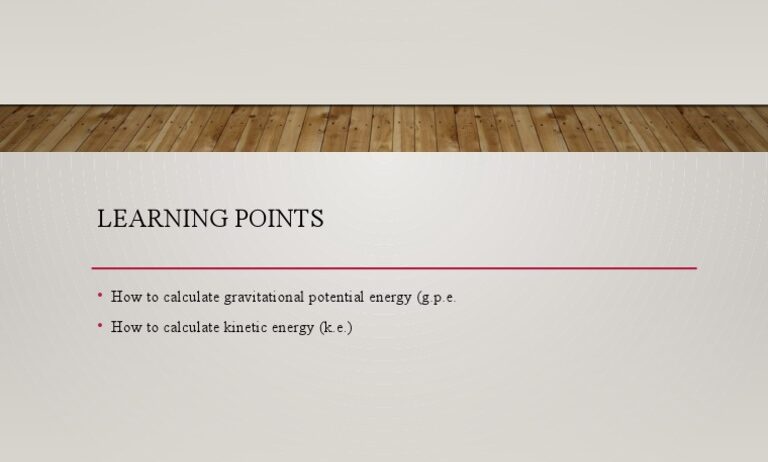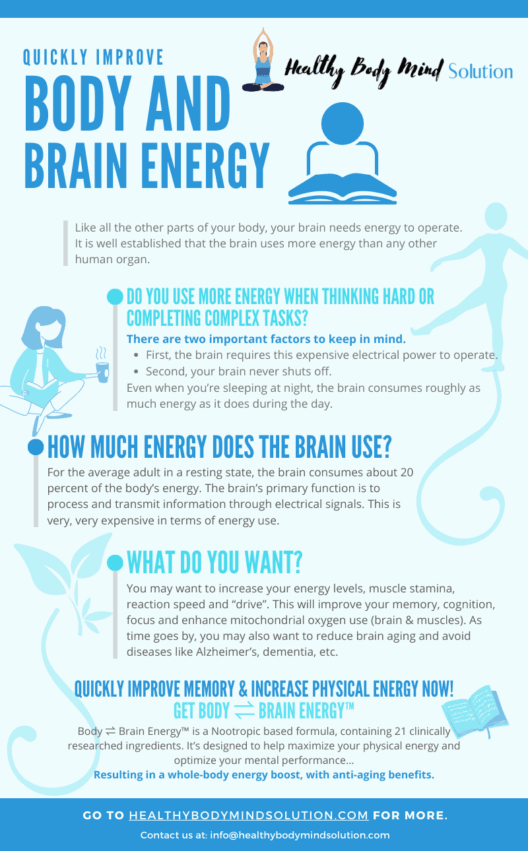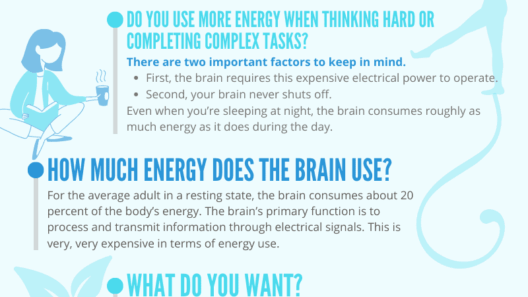Understanding energy in physics is akin to exploring the wilderness of a dense forest. There are myriad pathways, each leading to a distinct destination, and the key to navigating this complex terrain lies in the careful study of its constituents. At its core, energy is the ability to perform work, and it manifests in various forms, from the kinetic energy of a moving object to the potential energy stored in a compressed spring. This discourse will traverse through the landscapes of mechanical energy, thermodynamic energy, and electrical energy, unveiling the calculations and principles that govern their existence.
To embark upon this journey, it is imperative to first elucidate the distinction between kinetic and potential energy. Kinetic energy is the energy of motion, defined mathematically as ( KE = frac{1}{2}mv^2 ), where ( m ) represents mass and ( v ) signifies velocity. Imagine a robust river cascading through the mountains — the swiftness of the water translates into kinetic energy, a dynamic force capable of eroding rocks and shaping valleys. In contrast, potential energy resides in waiting, like seeds buried within the soil, poised to sprout given the right conditions. The fundamental equation for gravitational potential energy is ( PE = mgh ), where ( g ) is the acceleration due to gravity and ( h ) is the height above a reference point. This interplay between kinetic and potential energy is reminiscent of a dance, with each form transforming into the other as conditions shift, illustrating the conservation of energy — a cornerstone principle in physics.
As we delve deeper, it is essential to acknowledge the conservation of mechanical energy, a principle that asserts that in the absence of non-conservative forces, the total mechanical energy of a system remains constant. Picture a pendulum swinging through the air. At its highest point, it possesses maximum potential energy and minimal kinetic energy. As it descends, potential energy is relinquished in favor of kinetic energy, culminating in maximum kinetic energy at the lowest point of its swing. This ongoing exchange epitomizes the gracefulness of energy transitions, reflecting nature’s penchant for equilibrium.
Beyond the realm of mechanical energy lies another domain, that of thermal energy. This form of energy is governed by the movements and vibrational states of atoms and molecules. The concept of temperature acts as an indicator of thermal energy; indeed, it is a measure of the average kinetic energy of particles in a substance. When thermal energy permeates a system, it can lead to heat transfer, manifesting as conduction, convection, or radiation. For instance, consider a pot of water heating on a stovetop. Heat from the burner transfers to the pot, elevating the water temperature, and eventually, enabling the molecules to escape as vapor. This transformation of thermal energy into kinetic energy illustrates a fundamental aspect of thermodynamics, each phase change a testament to the mesmerizing intricacies of energy equations.
Delving further into this dialogue with energy, we encounter electrical energy — the silent force that powers our modern lives. This form of energy is generated by the flow of electric charge, governed by the principles of electromagnetism. The basic formula for electrical energy is ( E = Pt ), where ( E ) represents energy, ( P ) is power, and ( t ) is time. A compelling metaphorical depiction of electrical energy could be akin to blood coursing through the arteries of a vast metropolis, fueling its myriad functions. When we plug in an appliance, we are tapping into this vast reservoir, converting it into actions — lighting our homes, refrigerating perishables, and charging our devices.
However, the journey to understanding energy does not conclude with its forms and calculations; it extends into the implications of energy consumption and sustainability. The relentless pursuit of energy to fuel our advancements must be tempered with an awareness of our environmental stewardship. Fossil fuels, despite their initial appeal as a dense source of energy, engender a plethora of challenges, including greenhouse gas emissions and the concomitant climate crisis. The dichotomy between renewable and non-renewable energy sources signifies more than just a change in generation; it embodies a pivotal shift in our relationship with the planet. Wind, solar, and hydroelectric power — each represents an opportunity to harness nature’s energy, transforming it from a force of destruction into one of healing and sustainability.
As we critically consider the energy landscape, the task of calculating energy consumption and efficiency becomes paramount. The energy efficiency of an appliance can be assessed using the formula: ( eta = frac{E_{output}}{E_{input}} times 100% ), where ( eta ) is the efficiency percentage. This ratio serves as a window into how effectively a system converts input energy into useful work. In a world increasingly cognizant of energy expenditures, such calculations can aid in making informed choices that align with sustainability goals.
In summation, navigating the concepts of energy in physics reveals intricate layers reflecting the interconnectedness of the universe. From the foundational equations revealing kinetic and potential energy, through the realms of thermal and electrical energy, to the pressing issues of sustainability, the journey is both enlightening and imperative. The continued exploration of energy not only fulfills the scientific inquiry but also serves as a clarion call for environmental consciousness. Understanding energy is not merely an academic pursuit; it is a vital undertaking for fostering a sustainable future.








